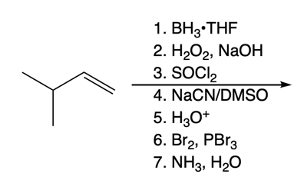Multiple Choice
Beginning from propane, select the best reagents provided to synthesize valine via the HVZ method.

 Verified step by step guidance
Verified step by step guidance
 1:24m
1:24mMaster Amino Acid Synthesis: HVZ Method Concept 1 with a bite sized video explanation from Johnny
Start learning
